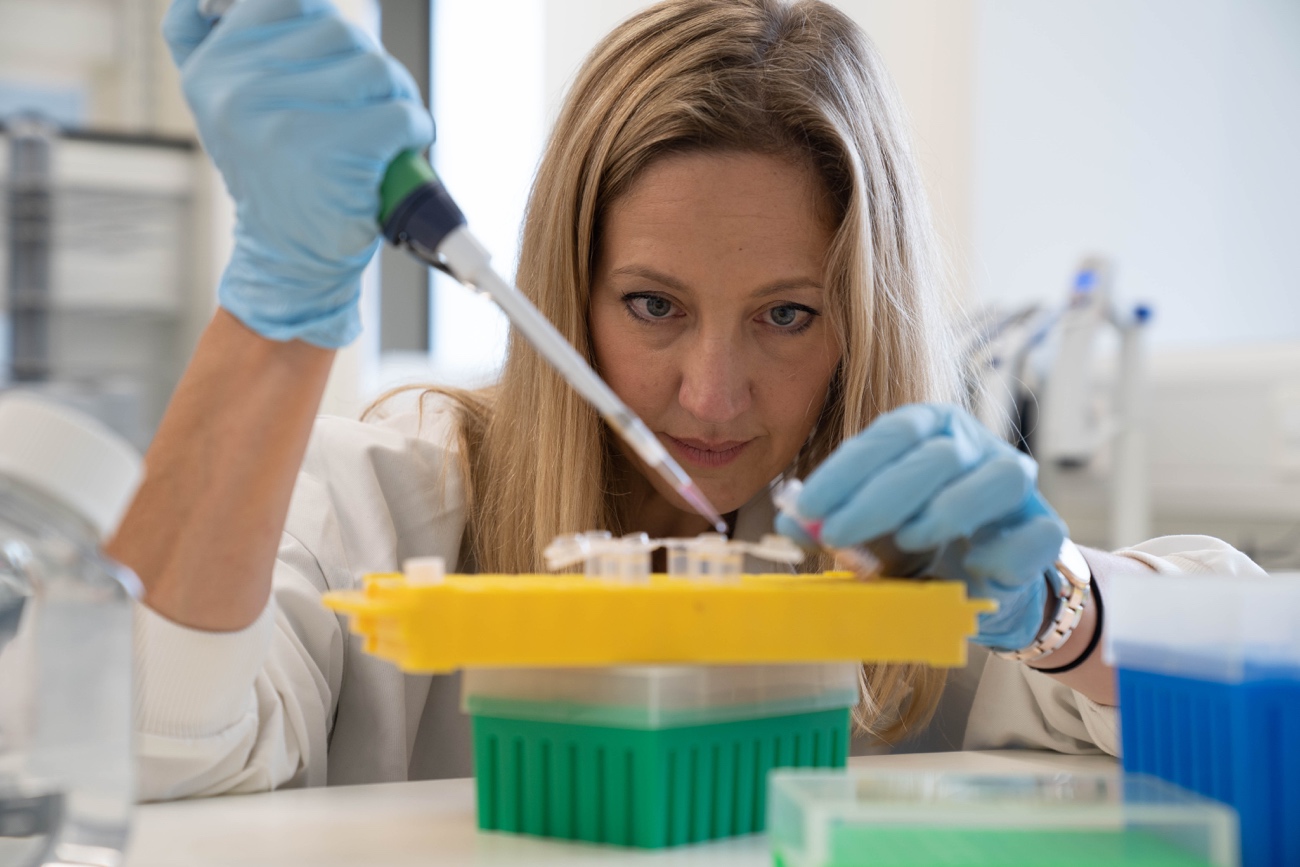Ground-breaking stem cell research funded

Professor Rachael Pearson
Fight for Sight has announced funding for a ground-breaking stem cell research study, which could reverse sight loss for people with macular diseases such as age-related macular degeneration and juvenile macular dystrophies.
A team at King’s College London, led by Professor Rachael Pearson, are using mini retinas (retinal organoids), grown from stem cells in the lab, to develop patches that could recreate a functioning macula. The patches could then be transplanted into the retinas of people with macular disease, to grow and restore macula function.
Katie, 35 from Northamptonshire, was diagnosed with Stargardt disease after a routine eye exam picked up some irregularities around her macula in 2017.
She said: “My diagnosis has had a huge impact on my life. It’s always at the back of my mind. I look at my little boys and I think what am I going to miss when they’re older? To be suddenly told you have an eye condition but that there’s nothing that can be done about it because it’s incurable is the hardest thing for me. Any research into a cure or treatment for Stargardt disease and other macular conditions gives me hope for the future and hope is what you have to cling on to when you have a progressive sight loss condition like this.”
Professor Pearson said: “Our hope is that this study will give us a better understanding of human macular formation, which we can then use to generate structures for transplantation for the treatment of age-related macular degeneration and other macular dystrophies. To be able to give back any vision to someone who has lost it is so important, but it would be particularly significant to improve vision in the macula, as we are trying to do in this project, because that’s the region upon which we are so dependent on for our high acuity vision. This means reading, seeing people’s faces, all of those tasks which we tend to take for granted. It’s so important for independence.”

Katie, who has Stargardt disease
Director of research at Fight for Sight, Dr Neha Issar-Brown, said: “We are delighted to fund this pioneering research project. Progress in stem cell research with the help of organoids is opening new and exciting avenues for research on sight loss caused by macular diseases such as age-related macular degeneration – a condition that can have a devastating impact on those living with it, hugely impeding independence for people later in life. We know from our recent Time to Focus research report that the prevalence of these conditions is on the rise. If successful, this research paves the way for future transplantation research and possibilities and has the potential to transform the lives of countless people with macular disease.”
To date, Professor Pearson and her team have developed protocols for differentiating stem cells and have turned them into retinal cells. The team are now working to get these new retinal cells to self-organise spatially, as seen in the human macula, and then to position them correctly in the eye to enable them to connect up to the host retina so they can perform their functions. The team has already succeeded in turning human stem cells into cone photoreceptors and their data indicates that it’s possible to rescue visual function using these photoreceptors.